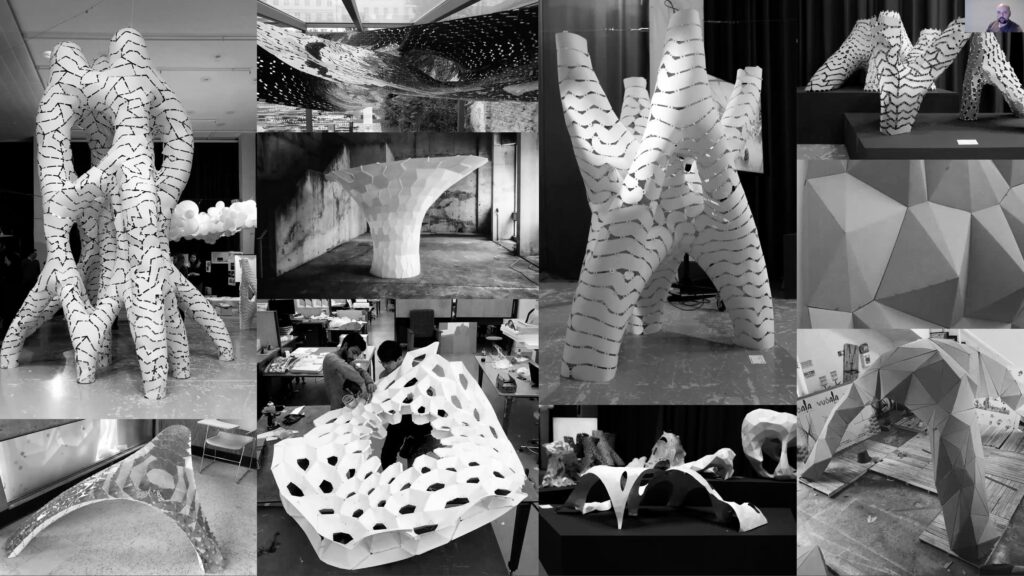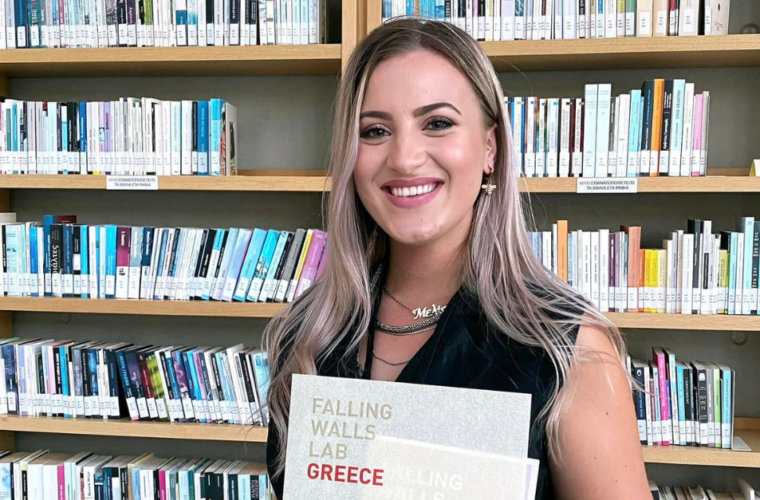Montreal is the largest city of the Canadian province of Quebec. The reputation of its art scene is known worldwide. The cultures and languages that meet in Montreal produce a unique environment that results in creative, innovative, and highly multidisciplinary works and collaborations.
It is not a coincidence that “Hexagram X ETS,” an event bringing artists and scientists together, was organized in Montreal – though delivered online due to the current anti-COVID measures. An event that had the sole purpose of connecting artists with scientists, and viceversa, to facilitate the emergence of new ideas and projects in areas like climate change, architecture, or agricultural spaces.
Hexagram and ETS in Montreal
Multidisciplinary work is praised the world over, but there is something in Montreal that just makes it happen. Open-mindedness flows naturally in the Montreal cultural community, and the necessary network and infrastructure to “talk the future into existence” are all there. Hexagram is one of them.
Hexagram is an interdisciplinary network that supports research and Research-Creation at the intersection of the arts, culture, and technology. It is a joint initiative of one of the English speaking universities in Montreal, Concordia University, and the two French speaking universities, Universite de Montreal a Montreal (UQAM), and the Universite de Montreal (UdeM).
For the event “Hexagram X ETS,” Hexagram partnered with the Ecole de technologie superieure (ETS), a public engineering faculty in Montreal. Based on the notion that new ideas spark when people come together, the event was organized by Jean Dubois, codirector of the Hexagram network, and Ghyslain Gagnon, research dean at the Ecole de technologie superieure.
The invitation was extended to 19 speakers who had 180 seconds each to present their work and offer their competences to their peers. A follow-up event was organized seven days later to let the presenters connect with the colleagues that raised their interest, and start planning for collaborations. The concept of Research-Creation underlies the philosophy with which the event was organized, and it is key to Hexagram and to the Montreal cultural milieu.
The concept of Research-Creation
While the collaboration between scientists and artists is not new, the concept of Research-Creation (RC) is specific to Montreal and to Quebec. Research-Creation has emerged in Quebec and Canada, before similar (yet often divergent) conceptions appeared elsewhere in the world. RC is a relatively recent expression that suggests a close interaction between scholarly research and artistic creative processes. In Quebec, new forms of knowledge production and crossover cultural hybridity have been consistently encouraged at university, government and policy level, which has lead to a unique research ecology which spans the academic, cultural, industrial and public spheres. In the definition of the SSHRC (Social Sciences and Humanities Research Council), RC is “an approach to research that combines creative and academic research practices, and supports the development of knowledge and innovation through artistic expression, scholarly investigation, and experimentation.” The creation process produces critically informed work in a variety of media (art forms). Fields that involve research-creation may include, but are not limited to architecture, design, creative writing, visual arts (e.g., painting, drawing, sculpture, ceramics, textiles), performing arts (e.g., dance, music, theatre), film, video, performance art, interdisciplinary arts, media and electronic arts, and new artistic practices.
RC challenges the notion that the output of research should only come in the form of a scientific publication, and most importantly, that knowledge itself is best vehiculated in that form. Therefore, the output of a RC process can be a performance, an art work, a hybrid product combining public lecturing and an art exhibition. It is all about how new knowledge is produced and shared with a wider audience.
The event: Hexagram X ETS
“Hexagram X ETS” took place on December 10, 2020. Nineteen speakers joined a zoom call and introduced themselves, their competences, their main research topic and research interests. Every project deserves a closer look. What follows is a selection of the project that were presented during the event. Follow the links on the names to learn more. The complete list of speakers is found on the event’s page on the Hexagram website.
Sandeep Bhagwati (Concordia University) presented “Geosonic temporalities,” a project where sound is used to understand the time scales of the anthropocene. In particular, he argued that sound may help people understand climate change through the listening of polyphony. How do the sonic realities of local environments reflect the time-scales of geological and climate change? And how can such transhuman temporalities –asks Bhagwati— be incorporated in ephemeral and localized sonic artworks?
Bora Ung (ETS) studies light-matter interactions for the development of new sensors. This research is based on new quantic technology. Ung suggests that partnering up with an artist may help the general public familiarize with complex principles of quantum physics (e.g. qubit and entanglement), which are mostly unknown or misunderstood, but worth popularizing because –Ung says– they are going to revolutionize the world of information.
Jerrmie Voix (ETS) develops in-ear technologies (“hearbables”) that find application in “intelligent” protection systems for the ear, communication in noisy settings, and the integration of brain interfaces that may help with early auditory diagnostics. This is based on the notion that an in-ear device may not only be used to listen, but also to record sounds from inside the body, like the heartbeat, breathing, etc. extracting useful information on the person’s health.
Andrei Nejur (Universite de Montreal) is an architect and design researcher. He presented a project on “Form-finding & digital fabrication,” offering advanced computational tools to create complex forms/structures.

Structures that artists, dancers, designers are experimenting with around the world using the computational tools presented by Andrei Nejur (UniversitE de MontrEal). Credit: Andrei Nejur.
Daniel Rousse (ETS) proposed a monumental work of visual arts that would attract the public’s attention and subsequently help fund a large scale project to bring drinkable water, hot water, and electricity to the millions of people that don’t have access to it today–which is paradoxical considering that part of the world is engaged with futuristic technology, and part struggles for basic necessities.
Danielle Monfet (ETS) presented an interesting project that moves from the premise that humans can adapt to their environment, specifically a closed environment like a building, but plants cannot. Therefore, she studies the energy performance of buildings for the integration and optimization of agricultural space in a controlled environment.
Philippe-Aubert Gauthier (UQAM) is a mechanical engineer and digital artist. His interest lies in 3D audio and how to manipulate matter in order to influence sound acoustics. This involves the study of how the objects in the environment, for example in an artistic installation, act as filters that amplify or dump specific sounds or frequencies.
Lucas Hof (ETS) is on the look for artists that can contribute with creative ideas to the model of “circular making,” a concept that resonates with the principles of the circular economy. In a nutshell, circular making tries to be 100% sustainable with the materials employed to build any object we use in modern society. Re-purposing what has been created, consumed, recycled, and reused.



